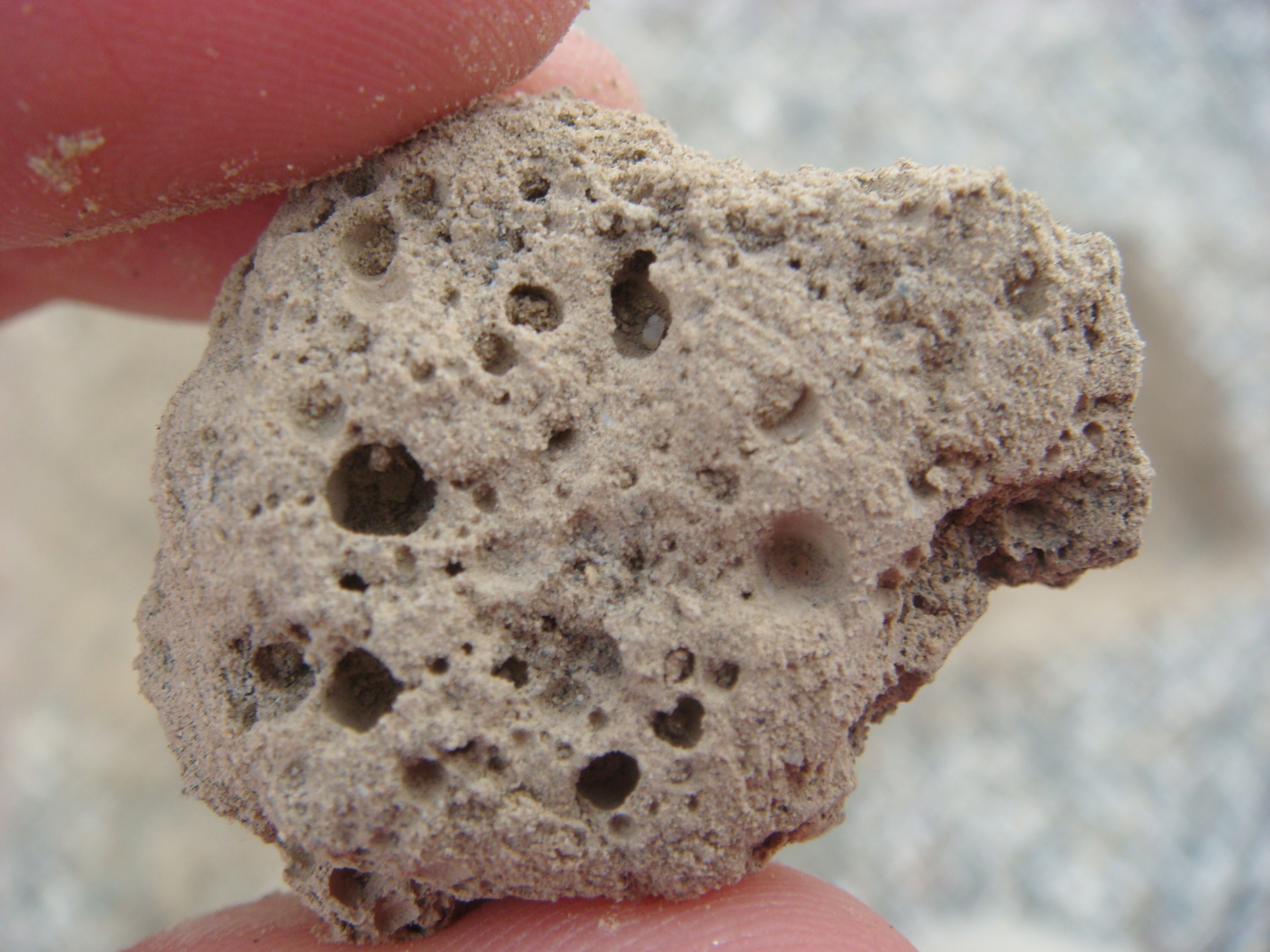
Soil scientists identify types of “horizons” to help describe the different characteristics from one layer of soil to the next. That typically includes three major horizons -- the surface horizon (A), subsoil (B) and substratum (C). The A horizon derives organic matter from plants and animals that inhabit the soil, lending to its dark color. But in the desert, where the dry climate is uninviting to many lifeforms, the elements more significantly impact soil makeup than living organisms do.
Recently, that desert soil horizon got its own name, and a University of Nebraska-Lincoln School of Natural Resources researcher has been studying its defining characteristics.
This year, Judy Turk, a pedologist and assistant professor at the University of Nebraska-Lincoln School of Natural Resources, was the lead author on a research paper about the vesicular horizon (V) that was published in the Soil Science Society of America Journal. Her findings are also the subject of a recent feature story on the society’s website.
Turk said that her study of the vesicular horizon began before it officially had that name, adding that the research contributed to the master V horizon’s inclusion in the U.S. Department of Agriculture’s Natural Resources Conservation Service 2017 Soil Survey Manual. The study, which was co-authored by her former graduate advisor, Robert Graham at the University of California, Riverside, explored two avenues of vesicular horizon research.
The V horizon soil layer, Turk said, features bubble-like, vesicular pores. They are formed when water entering the soil pushes out pockets of air from smaller pores, which then become trapped once the soil dries and hardens. The desert soil’s characteristics dictate how much water is absorbed and how much runs off. In the paper, titled, “Disturbance impacts on porosity and hydraulic properties of vesicular horizons,” Turk and the research team sought to examine how these V horizons form, while also showing how long it takes them to redevelop after the porous soil materials have been subjected to human disturbances and crushed.
“There were two main goals,” Turk said. “The first was to learn more about the relationship between the development of V horizons and the soil-forming factors. The second goal was to determine how quickly V horizons reform after they are disturbed and how this rate of recovery varies among sites located in different desert ecoregions.”
At nine sites spread across the Sonoran, Mojave and Great Basin deserts, the team collected samples of the V horizons from small plots and CT scanned them to measure the amount and types of pores. Then, they created “disturbances.” The soils were crushed, replaced and left in the plots for a year to recover. After that, they were scanned again to compare how the pores looked a year after they were crushed.
Turk said that the research team’s previous examination of NRCS databases showed that V horizons are better developed in cold deserts (like the Great Basin) than in hot deserts (the Mojave and Sonoran). The latest research, funded by the USDA-NRCS and National Science Foundation, explores why that difference in development exists. She told the Soils Science Society of America that the group found that vesicles developed more rapidly in sandy soils compared to soils with more silt, which was unexpected.
“The capacity for vesicular pores to reform within a year after the vesicular horizon is disturbed is something that is interesting,” Turk says. “The post-disturbance vesicular horizons being thinner with smaller pores tells us that what we observed in the undisturbed soils takes time to form.”
The rest of the story in Soil Science Society of America can be found here.
Cory Matteson, SNR Communications
More details at: https://www.soils.org/news/science-news/soil-pores-hold-key-stability-desert-soils